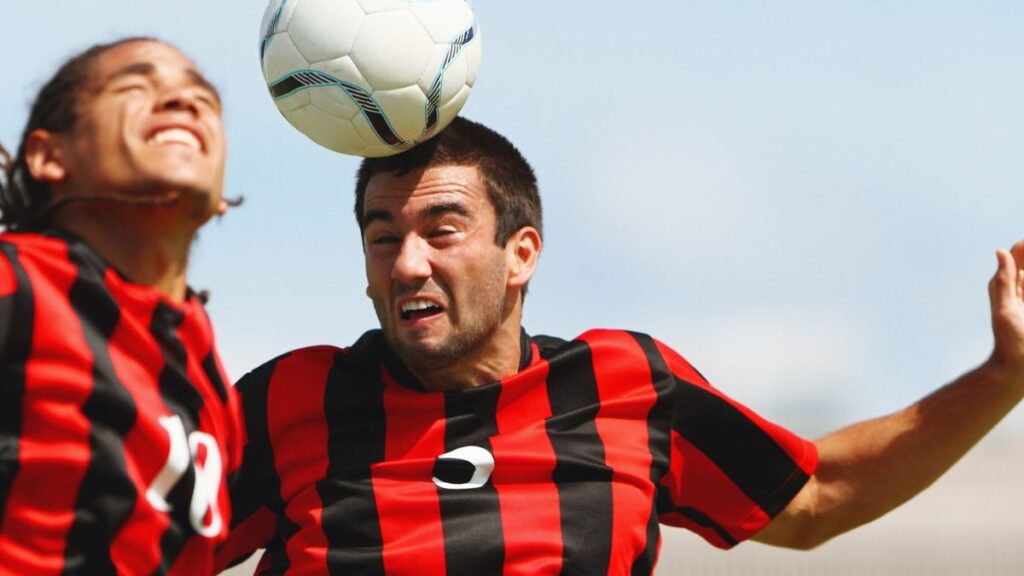Boost your betting experience and get up to $200 bonus right now!
October 2025 is set to be a hectic month on global football’s calendar, with European and African club competitions clashing in ways that challenge players, managers, and fans alike. Major leagues like the Premier League, La Liga, Serie A, Bundesliga, and Ligue 1 are all firing on all cylinders, while the intense CAF Champions League grips African football enthusiasts. Meanwhile, Major League Soccer (MLS) in North America is pushing towards its pivotal Decision Day as teams scramble for playoff positions. Amid this circus, the Africa Cup of Nations postponed to December injects another dose of tension, amplifying fixture congestion and raising questions about player welfare and competitive balance. This crossroads in scheduling highlights the broader struggle between preserving tradition, accommodating commercial interests, and managing player health in an increasingly crowded football calendar.
This article peels back the layers on how these major leagues’ schedules intersect in October 2025, analyzing the challenges and opportunities that come with overlapping competitions across two continents. From logistical headaches to the tactical gymnastics coaches must perform, the following sections delve deep into the football fever boiling across European and African pitches, punctuated by perspectives on how clubs, players, and tournament organisers negotiate this complex landscape.
- European club competition congestion and the clash with international commitments
- The CAF Champions League’s role amid Africa’s evolving football calendar
- How Major League Soccer adapts its schedule during peak global football periods
- Player welfare concerns and legal battles shaping the 2025 football calendar
- Key moments and fixtures fans can’t miss during October 2025
European Club Competitions Confronting Unprecedented Fixture Congestion
October always represents a crucial phase for Europe’s powerhouses—but in 2025, the pressure cooker atmosphere intensifies with an extremely demanding fixture lineup. The Premier League, La Liga, Serie A, Bundesliga, and Ligue 1 clubs are engaged in domestic league matches, UEFA Champions League group stages, and domestic cup fixtures, all within a squeezed calendar. The UEFA Champions League, which recently expanded its number of fixtures starting this season, bubbles fiercely alongside regular league play, with clubs having to juggle as many as six or seven matches across these competitions in just a few weeks.
Consider Liverpool, whose squad rotation has become a key to maintaining competitiveness as highlighted in latest analyses. These rotations are a tactical response to the tight scheduling, forcing managers to optimally balance fatigue and form. Meanwhile, the English Football League (EFL) competitions continue paralleling Premier League action, with second and third divisions demanding their own chunk of attention and influencing player workload significantly.
Here’s a snapshot of the league and European match rhythm for October 2025:
| League | Key Matches Frequency | European Matches | Impact on Player Rotation |
|---|---|---|---|
| Premier League | Weekly, plus midweek cup fixtures | 2-3 UEFA CL matches per club | High; squad depth crucial |
| La Liga | Weekly league matches, Copa del Rey early rounds | UEFA CL group matches midweek | Moderate to high |
| Serie A | Regular weekend fixtures | EUFA CL + Conference League engagements | High |
| Bundesliga | Challenging midweek and weekend clash | Champions League matches scheduling | High with rotation emphasis |
| Ligue 1 | Multiple league ties plus domestic cups | Champions League and Europa League games | Moderate; some rescheduling ongoing |
The use of advanced sports science and recovery protocols has become common, but the fatigue toll still spices heated discussions about the long-term sustainability of such formidable fixture lists. Clubs like Atalanta, who have blazed a tactical path in balancing competition pressure—detailed in tactical breakdowns—exemplify adaptive strategies. Yet, controversies surrounding potentially unfair player burdens continue to shadow the scene.
This congested European calendar also intersects with international breaks, adding another layer of complexity. In a recent legal challenge, European leagues and players’ unions criticized FIFA’s expanded calendar, which pushes the boundaries of player endurance and calendar coordination, as outlined in fixture congestion crisis coverage. This tug-of-war reaches its peak in October, marking one of the hardest months to navigate competitively and practically.

CAF Champions League: African Club Football’s Spotlight and Its Scheduling Complexities
As Europe wrestles with its soccer calendar, African clubs battle their own pressures in the CAF Champions League during October 2025. This tournament, which is rapidly growing in prestige and competitiveness, collides with domestic leagues and the looming Africa Cup of Nations (AFCON) moved to December. This shift was made to prevent clashing with the FIFA Club World Cup, but it piles additional pressure on clubs and players during the traditional European campaign period.
The CAF Champions League schedule demands that successful clubs play midweek continental matches while still competing fiercely in their national leagues at weekends. For instance, clubs in Egypt, South Africa, Morocco, and Tunisia juggle these commitments with a calendar that varies significantly from the rigid European structure. The differences in climate, travel distances, and infrastructural support bring their distinctive challenges.
Here’s a rundown of key CAF-related considerations shaping the October 2025 landscape:
- Overlap with European football: Several African players feature prominently in European leagues, complicating national team selections and club availability.
- Impact of Africa Cup of Nations rescheduling: The AFCON postponement to December compresses club competitions, increasing risk of fixture pile-ups and player burnout.
- Emerging broadcasting and commercial interests: Increased global viewership is pushing CAF to upgrade streaming and scheduling for optimal exposure.
- Regulatory tensions: CAF’s calendar often conflicts with FIFA’s, with African leagues pushing back against perceived impositions.
- Betting and sponsorship impact: As studies such as football betting trends on African leagues highlight, interest during this period spikes, influencing league revenues and sponsor strategies.
This juxtaposition creates a fascinating dynamic: African club football, traditionally under the global radar, now operates in a space overlapping the spotlight-hogging European contests. The movement and health of marquee players—those who shuttle between continents—become a focal point. From a fan’s perspective, this creates unique viewing opportunities but also fragmented attention.
In many ways, African clubs harness this challenge too. The CAF Champions League represents both footballing pride and a pathway for talent to showcase on global platforms alongside the UEFA Champions League. Clubs like Al Ahly, TP Mazembe, and Raja Casablanca demonstrate competitive resilience and pedigree, blending local passion with global dreams.
Major League Soccer’s Strategic Adaptations During Global Soccer Power Plays
Across the Atlantic, Major League Soccer (MLS) in 2025 is not just riding the rising tide of North American soccer enthusiasm but actively navigating how to fit into an already swollen global calendar. With its 30 teams, including newcomers like San Diego FC, MLS maintains a 34-match regular season running through to Decision Day on October 18, just as European and African schedules peak.
MLS faces a balancing task: keeping fans engaged, players fresh, and teams competitive during periods dominated by international tournaments like the FIFA Club World Cup and the CONCACAF Gold Cup, the latter overlap causing a pause in MLS action in mid-June. The 2025 MLS schedule, as detailed by league announcements and highlighted at weekly fixtures hub, features multiple marquee rivalry matches, including Rivalry Week in mid-May and the All-Star Game in July, generating momentum ahead of the critical autumn period.
Several logistical and strategic features define MLS’s October 2025 landscape:
- Decision Day intensity: The final regular-season matches determine playoff qualifications, creating a high-stakes environment.
- Increased broadcasting reach: With the season available on MLS Season Pass on Apple TV and select matches on FOX and TSN, accessibility improves fan engagement worldwide.
- Player management challenges: Clubs compete with international call-ups and domestic weariness, fueling tactical rotation and rehabilitation efforts.
- Cross-border competitions integration: The Leagues Cup, pitting MLS against Mexico’s Liga MX in a summer tournament, bridges regional fanbases and player experiences.
- New market exploration: Expansion teams target broader audiences while maintaining competitive balance.
With the league heading towards its 30th season, MLS has evolved not only as a competitive platform but as a testing ground for innovative scheduling and fan experience enhancements. It’s proof that football in North America is very much part of the global football ecosystem and not an isolated event.
Player Welfare and Legal Controversies Impacting Football’s Global Timetable
October 2025 also shines a harsh light on the ongoing conflict between football’s stakeholders about schedule sustainability and player welfare. European leagues representing the Premier League, La Liga, Serie A, Bundesliga, and Ligue 1, alongside FIFPRO Europe and players’ unions, are confronting FIFA over the expanded international calendar and the increased number of fixtures in competitions like the Club World Cup and the 2026 World Cup—a turbulent evolution documented extensively in relevant reporting.
In May, UEFA Champions League’s increased match count added to the mounting burden. These developments prompted formal complaints to the European Union, alleging FIFA’s breach of competition law by overloading players and compromising domestic leagues’ economic interests. The situation is exacerbated by the AFCON postponement, placed squarely in the European season’s heart, leading to distress for players expected to fulfill club and country duties with diminishing recovery time. Maheta Molango’s remarks on the untenability of the current calendar resonate across the football community.
Besides legal scrutiny, clubs grappling with injuries from dense schedules endure tactical headaches, forcing managers to rotate squads more than ever. Sports scientists and player welfare advocates emphasize the health risks; meanwhile, fans debate the entertainment value against these hidden costs.
- Legal action filings: European leagues and unions challenge FIFA’s control over the calendar.
- Player union activism: Greater voice on protecting athlete health and voicing grievances about fixture overload.
- Club-continental tournament tension: Teams caught between lucrative competitions and player fatigue.
- Broadcasting and commercial pressures: Calendar expansion fuels revenue but at what cost?
- Calls for calendar reform: Talk about inclusion of leagues and unions in decision-making to ensure sustainability.
This clash of interests highlights football’s growing pains in balancing global growth with the sport’s human core. Fans and analysts are closely watching how this battle will shape future scheduling and the game’s rhythm worldwide.

October 2025’s Must-Watch Fixtures and Rivalries Across Continents
Amid the chaos, October 2025 offers a feast of unforgettable matches for football fans across Europe, Africa, and North America. Historic club rivalries and high-stakes continental clashes promise drama, goals, and passionate atmospheres, blending football’s storytelling with on-pitch intensity.
Key fixtures to circle on the calendar include:
- Premier League Big Matches: Intense showdowns during the league’s title race phase, as dissected in here.
- UEFA Champions League Dramatic Group Stages: Critical six-pointer matches determining knockout stage hopes, enhanced by new format excitement.
- CAF Champions League Quarterfinal Push: African giants going all out in pursuit of continental glory, per reports available at coverage.
- MLS Decision Day Tensions: The final push to secure playoff destiny, drama-packed like few American soccer scenes can rival.
- Top Domestic Cup Clashes in Ligue 1 and Serie A: Clubs balancing ambitions in multiple competitions, with twisty storylines unfolding.
That’s on top of international windows such as the UEFA Nations League ties happening concurrently, spilling over narratives featuring rising and established stars alike. These fixtures are more than games; they’re international football’s pulse points that radiate excitement to fans new and old.
Staying updated and immersed in this rich football tapestry is easier than ever through platforms like RKT Football’s Weekly Fixtures and personalized content streams.
Join today and grab up to $200 bonus for your next bets!
Content assisted by AI. This article was created in whole or in part with the help of artificial intelligence.